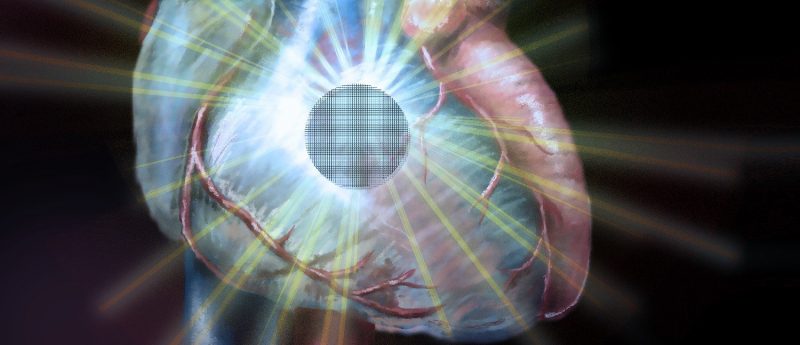Injectable unfolding patch alleviates the need for open heart surgery

A newly developed biomaterial is being utilized to deliver new tissue to repair cardiac damage.
Researchers at the University of Toronto (ON, Canada) have developed a biomaterial that can deliver lab-grown sections of tissue to damaged organs. The biomaterial is injectable, alleviating the need for invasive open heart surgery that is extremely risky for patients that have suffered a heart attack.
“If an implant requires open-heart surgery, it’s not going to be widely available to patients,” explained Milica Radisic, professor, University of Toronto. After a heart attack, the heart’s function is reduced so much that the risks of invasive procedures like open-heart surgery outweigh the potential benefits. “It’s just too dangerous,” she continued.
The small patch of biomaterial is first seeded with heart cells and grown for a few days. It is then injected into the damaged organ, where it unfurls in a bandage shape. Because the shape-memory of the patch is based on physical properties, the unfolding process isn’t affected by local conditions at the area of injection and doesn’t require any additional injections. The patch is also biocompatible and biodegradable, so eventually only the newly grown tissue will remain.
“When we saw that the lab-grown cardiac tissue was functional and not affected by the injection process, that was very exciting,” commented Miles Montgomery, a PhD candidate in Radisic’s lab who developed the injectability of the patch. “Heart cells are extremely sensitive, so if we can do it with them, we can likely do it with other tissues as well.”
In an initial study in rats, the patch was shown to improve heart function, with ventricles with the patch pumping more blood. Radisic and her team are now collaborating with researchers from the Hospital for Sick Children (ON, Canada) to assess the long-term stability of the patches and if the improvement in cardiac function can be maintained.
“It can’t restore the heart back to full health, but if it could be done in a human, we think it would significantly improve quality of life,” concluded Radisic.
Source: https://www.sciencedaily.com/releases/2017/08/170814120951.htm